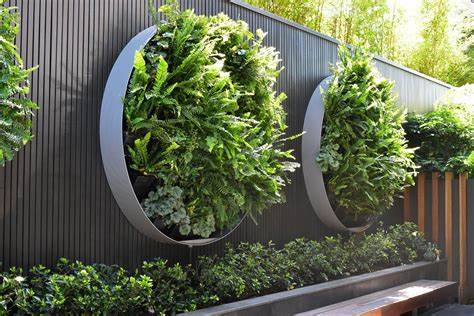
Introduction
Vertical gardens have become a crucial aspect of contemporary architectural design, seamlessly merging nature with urban spaces. These living walls not only enhance the aesthetic appeal of buildings but also offer numerous environmental and health benefits. By integrating greenery into the very fabric of structures, vertical gardens bring us closer to nature while addressing the challenges of urbanization.
Historical Background
Vertical gardens have a rich history dating back to ancient civilizations. The Hanging Gardens of Babylon, considered one of the Seven Wonders of the Ancient World, serves as a notable example. Throughout history, different cultures have embraced vertical gardens, recognizing their significance in creating harmonious spaces.
Key Concepts and Definitions
Vertical gardens are architectural features that incorporate living plants into the design. They serve multiple purposes, including improving air quality, reducing energy consumption, and enhancing the overall well-being of occupants. Biophilia, the innate human connection with nature, is closely linked with vertical gardens as they fulfill our need for greenery in urban environments. Furthermore, vertical gardens contribute to sustainability efforts by reducing the carbon footprint and promoting biodiversity.
Benefits of Vertical Gardens in Architecture
Improved air quality and reduction of air pollution
Vertical gardens act as natural air filters, absorbing pollutants and releasing fresh oxygen. By mitigating harmful gases and particulate matter, these green installations improve overall air quality, making buildings healthier for occupants.
Increased biodiversity and creation of wildlife habitats
Vertical gardens provide habitats for a diverse range of plant species, attracting birds, insects, and other wildlife. This influx of biodiversity helps restore ecological balance and contributes to the overall health of urban ecosystems.

Thermal insulation and energy efficiency in buildings
The layer of vegetation provided by vertical gardens acts as a natural insulator, reducing heat loss during winter and heat gain during summer. This natural insulation lowers the energy consumption required for heating and cooling, leading to significant energy savings.
Design and Implementation of Vertical Gardens
Different types of vertical gardens
There are various types of vertical gardens, including green walls, living walls, and modular systems. Each design has its own unique characteristics and considerations, allowing architects to choose the most suitable option for their projects.
Structural considerations for integrating vertical gardens into buildings
Designing and implementing vertical gardens require careful consideration of structural integrity, irrigation systems, and maintenance access. Architects must work closely with structural engineers to ensure the safety and sustainability of these installations.
Plant selection and maintenance requirements
Choosing the right plants for vertical gardens is crucial. Factors such as sunlight exposure, climate, and maintenance requirements must be taken into account. With proper care and regular maintenance, vertical gardens can thrive and continue to provide their benefits for years to come.
Psychological and Health Benefits of Vertical Gardens
Stress reduction and improvement in mental well-being
The presence of greenery has been proven to reduce stress levels and improve mental well-being. Vertical gardens provide a soothing environment that helps alleviate anxiety and enhance overall mood.

Enhanced productivity and creativity in indoor spaces
Studies have shown that exposure to nature, even in the form of vertical gardens, can boost productivity and creativity. Incorporating these living installations in offices and educational institutions can foster a more productive and innovative atmosphere.
Therapeutic effects and healing environments
Vertical gardens can create therapeutic environments, particularly in healthcare facilities. The calming effect of nature helps patients recover faster and promotes a sense of well-being.
Case Studies or Examples
Several successful projects have integrated vertical gardens into architecture, leaving a positive impact on the surrounding environment and community. Notable examples include the CaixaForum in Madrid and the One Central Park in Sydney.
Current Trends or Developments
Technological advancements have led to innovations in vertical garden systems, making them more efficient and sustainable. Ongoing research focuses on optimizing irrigation techniques, developing self-sustaining green walls, and improving plant selection processes.
Challenges or Controversies
Addressing concerns about the maintenance and cost of vertical gardens is crucial for their widespread adoption. Additionally, critics argue that vertical gardens may not always be environmentally friendly due to the resources required for their installation and maintenance.

Future Outlook
The future of vertical gardens is promising, with increasing awareness of their benefits and advancements in technology. These green installations have the potential to play a significant role in sustainable urban development, combating climate change, and creating healthier living environments.
In conclusion, vertical gardens are a perfect fusion of nature and architecture, offering numerous benefits for both humans and the environment. By embracing these living installations, we can bridge the gap between urban spaces and the natural world, creating harmonious and sustainable environments for generations to come.
References
Kato, S., & Takanashi, H. (2015). Vertical greening systems—A review on recent technologies and researches. Landscape and Ecological Engineering, 11(1), 27-39.
Chiesura, A. (2004). The role of urban parks for the sustainable city. Landscape and urban planning, 68(1), 129-138.




